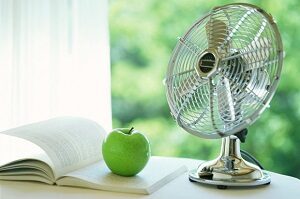DC Metro Realty Team – Denise Buck & Ed Johnson
Is your credit score a mystery to you? Well, it may be time to demystify that three-digit number, since a good credit score is a key factor in getting a better interest rate on your mortgage.
“Your credit score is the foundation of your financial health,” says Anthony Sprauve, senior consumer credit specialist for Fair Isaac Corporation (FICO), an analytics software company and owner of the FICO Score. The FICO score is a standard for measuring credit risk in the credit card, banking, retail, and mortgage industries.
With a high credit score, you can secure more credit as well as a cheaper interest rate on a mortgage, says Sprauve. So, it’s worth investing the time and energy to improve it.
Read on for five little-known ways to improve your credit score and ultimately get you the best interest rate possible for a home loan.
Tip #1: Increase the limit on your credit cards
Let’s say you have four credit cards in your billfold. Each of them has only a $1,000 limit. If you ask your credit card companies to increase those limits, it could give a nice boost to your credit score, says Jim Garnett, CEO of AskMrG Consulting, a financial consulting company in Ankeny, Iowa. But here’s the catch: You’ll still need to keep your credit card balance low.
For example, if you have a credit card with a limit of $5,000, but only use $500 of that credit, it shows that you are responsible. You don’t go crazy and buy everything in sight, he explains. In a lender’s eyes, that means you can handle a home loan and pay it off responsibly.
But if you have a $1,000 limit and still have that same $500 balance, it makes you seem less responsible. It communicates that you wouldn’t be able to manage a mortgage and could be more of a risk, Garnett says.
He warns, however, to beware of high limits. “People who get $10,000 and $15,000 credit card limits seem to have a sense that they have money in the bank. That’s not true,” he says.
In order to avoid that temptation, you should contact your credit card companies once you’ve secured your mortgage and have those limits reduced back down, he advises.
[Shopping for a mortgage or looking to refinance? Click to find the right lender now.]
Tip #2: Only use 7 percent of your revolving credit
Credit scores run from 300 to 850. About 25 percent of people with credit scores – approximately more than 50 million individuals – have scores greater than 785, according to myFICO, a subsidiary of FICO.
So what can we learn from these high credit score achievers?
For starters, they have an average of four credit cards or loans with balances, notes myFICO. However, high credit achievers keep a low balance on those credit cards and loans.
In fact, high credit scorers only use an average of 7 percent of their available revolving credit. Revolving credit is a type of credit that has a predetermined credit or spending limit, like a credit card. And unlike a loan, a revolving account doesn’t automatically close once its balance reaches zero.
“While people with high FICO scores are not perfect, their consistently responsible financial behaviour pays off over time,” Sprauve says. “In a challenging economic period, the fact that we all have a chance to be high achievers is very good news. The lesson of these high achievers is that it’s never too late to rebuild and score high.”
Tip #3: Don’t cancel older credit cards
Credit cards that you have kept for years are like fine wine. They get better with age – as long as you pay your bills on time.
“If you had a particular card for 14 years, and you haven’t been late on a payment, that’s a good sign that you are responsible to the lenders,” Garnett says. If someone can responsibly pay their credit card bills on time, they’re probably more likely to pay their mortgage payments on time as well.
In fact, he adds, your credit cards don’t even need to have any balances on them to look good on paper, since they contribute to your overall available credit. On the other hand, closing old credit cards reduces your available credit and increases your balance-to-limit ratio. That’s a sign of risk that could lower your credit score and ultimately keep you from getting the best interest rate possible on your mortgage.
[Shopping for a mortgage or looking to refinance? Click to find the right lender now.]
Tip #4: Don’t apply for more than two credit cards each year
While keeping credit card accounts open can be a good thing, that doesn’t mean you should go and apply for a handful of credit cards at the same time, says Garnett. When you apply for a credit card, you authorize lenders to make an inquiry for a copy of your credit report from a credit bureau. And a large number of inquiries, especially within a short period of time, means greater risk to a lender, notes myFICO.
What kind of risk do lenders see? Well, statistically, people with six or more inquiries on their credit reports can be up to eight times more likely to declare bankruptcy than people with no inquiries on their reports, according to myFICO.
Garnett sees this problem a lot with college students who apply for multiple credit cards just to get that free umbrella or free hat.
Credit inquiries can look especially risky to lenders if they see that you applied and were denied for a line of credit, Garnett says. “They wonder why you applied for all this credit and never received it.”
Tip #5: Give yourself at least six months to review and fix your credit report
Like anything worthwhile, improving your credit score will take time to improve. But you can’t change your credit score if you don’t know that something is wrong. And if you give yourself enough time, you can correct any mistakes and change any bad habits, says Sprauve.
“We recommend that you do things a year in advance. Nothing is going to be fixed or changed overnight,” Sprauve says. “The minimum is six months to get things changed around. But give yourself a year.”
You can order a credit report for free once a year from all three nationwide consumer credit reporting companies at annualcreditreport.com. Or you can order one for a small cost at MyFICO.com, TransUnion.com, Experian.com, or Equifax.com.
Just keep in mind that the FICO score has a different name at each credit reporting agency. At Equifax it is called the BEACON® SCORE, while at TransUnion and Experian it is called Classic FICO® Risk Score.
Next, you’ll need to review the reason codes, which detail why you have a certain score, says Garnett. “It will tell you if you had too many late payments or other reasons,” he explains. “They have a road map on how to improve your score.”
Originally published on Yahoo Homes

By Lee NelsonApril 7, 2014 1:23 PM
 “Many of you have either purchased a home with Granite, just upgraded to Granite, or are thinking about Granite…but do you really know how to clean it? Don’t make the mistake of using ‘normal’ cleaning products. Take a few tips from the pros and do it right!”
“Many of you have either purchased a home with Granite, just upgraded to Granite, or are thinking about Granite…but do you really know how to clean it? Don’t make the mistake of using ‘normal’ cleaning products. Take a few tips from the pros and do it right!”













